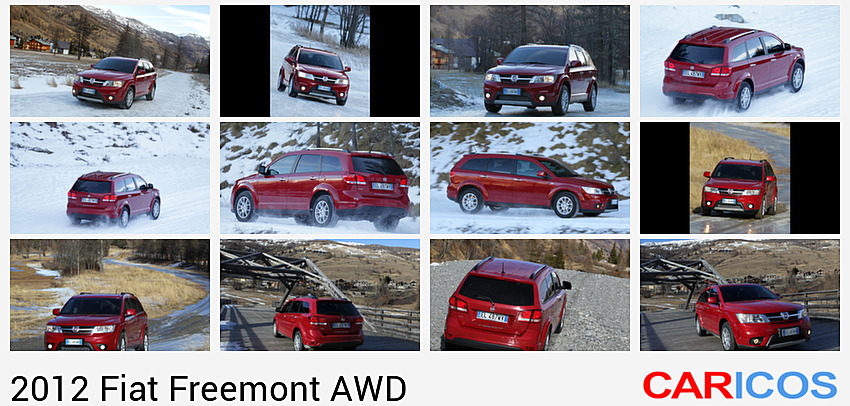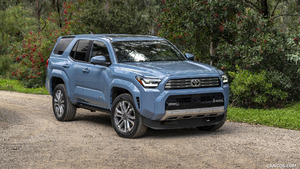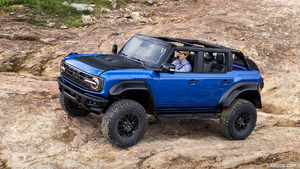Fiat Freemont AWD
The new Fiat Freemont AWD (All-Wheel Drive) is the four-wheel drive version matched with the 170 HP 2.0 MultiJet 2 and 280 HP 3.6 V6 petrol engines, both offered with the new six-speed automatic transmission. It is a technologically sophisticated and completely automated system that allows the driver to control the vehicle even in extreme conditions in total safety.
Freemont AWD detects the traction and ideal ratio in all conditions while at the same time guaranteeing the top on-board comfort.
The AWD active four-wheel drive system is on-demand, and it is equipped with an electronic control unit which uses sensors to detect the grip of the four wheels and decides when to transmit traction to the rear. The system intervenes on surfaces where the wheels may not have good grip (mud, snow, ice...) to ensure maximum traction and no limits to the routes the vehicle can take, or in the case of asphalt surfaces, to ensure additional traction and greater safety on bends.
Specifically, the electronic system modulates torque transfer through the use of electronically controlled coupling (ECC). Since it only operates on demand, the system contributes to containing fuel consumption. In addition, the ECC on the AWD system is more flexible and more accurate than a viscous coupling or a Torsen® system.
The control unit also interfaces with the ESP and the traction control system. Remember that the AWD system does not replace traction control since it only intervenes in circumstances where the traction varies between the two axles (for instance, when the front wheels are on ice while the rear wheels are on dry asphalt or on steep hills). On the other hand, in the event of different grip on two sides of the vehicle, the ESP kicks in.
Automatic operation in every situation and on every road surface
The active Freemont all-wheel drive system does not require any controls or input. In detail, it is passive for many driving conditions and traction is only transmitted to the front wheels. The system operates by optimising traction and drivability using the following strategies:
Preventive control: in this phase, the system acts without considering wheel slip but only analyses the driver's action on the pedal according to the driving conditions. If the driver is requesting a lot of power, the AWD traction is automatically activated, transferring a high percentage of power to the rear wheels. This prevents the front wheels from slipping, since the power is transmitted through all four wheels.
Slip control: a second operating mode uses the feedback from the wheel speed sensors to determine the appropriate torque to transfer. When the front wheels slip, the ECU (Electronic Control Unit) activates the ECC in order to start transferring power to the rear wheels. If the car is to start with the front wheels on ice (or surface with a poor grip) and the rear wheels on a dry surface, the system sends more torque to the rear wheels in order to reduce slippage. The power to the rear wheels is also modulated in the event of lost traction at constant speed. For instance, during "aquaplaning" on a puddle of water, the system is capable of remodulating the power sent to the rear wheels, since higher values would not be necessary.
Affects drivability at moderate speed: the AWD system is used to optimise the vehicle dynamics. On the Fiat Freemont, the ECU controls the torque on the rear wheels to improve drivability even between 40 and 105 km/h. In this speed range, the system uses the torque for the rear wheels on bends and when accelerating to improve steering and make drivability more neutral. This is achieved via the electronic control system, which is preferable to viscous couplings that transfer the torque to the rear wheels only after having detected a certain difference in speed between the front and rear axles.
Prevents slipping during curves at low speeds: The ECU, which continuously interfaces with the ESP system, uses the steering angle sensor to determine when the vehicle is steering with a narrow angle. This condition induces the ECU to reduce torque on the rear wheels to prevent slipping.
Performance and comfort
The 170 HP 2.0 MultiJet 2 engine ensures optimum balance of performance, driving pleasure and fuel consumption. The vehicle's drivability is guaranteed by a maximum torque value (350 Nm) which is reached at 1750 rpm and constant up to 2500 for the 170 HP version. For the normal usage range (from 1500 rpm up to 3000 rpm), the torque never falls below 300 Nm, avoiding uncomfortable "downshifts" and enhancing driving pleasure. This makes the engine very flexible, with optimum acceleration from 0 to 100 km/h and maximum speeds: 11.1 seconds and 184 km/h. All of this translates into dynamic and safe driving. The values recorded by the powerful 3.6 V6 petrol engine available only with the AWD system are also outstanding: 280 HP (206 kW) at 6350 rpm of maximum power, 342 Nm at 4350 rpm of maximum torque, top speed of 206 km/h and acceleration from 0 to 100 km/h in just 8.4 seconds.
Both Fiat Freemont AWD engines are combined with a 6-speed automatic transmission that ensures excellent performance together with precise and quiet operation to provide ultimate comfort and drivability.
In detail, with this new transmission driving is more pleasant and smoother owing to minimal rev fluctuations during each gear change. For example, when maximum acceleration is necessary, when overtaking, the kick-down speeds up the automatic changing of gears to make the manoeuvre easier. The six gears of the Freemont automatic transmission also allow the engine to always operate in the most efficient rev band, ensuring lower emissions and fuel consumption. In the same way the new transmission ensures excellent performance in all situations (gear change, pick-up, acceleration) thanks to precise torque management.
Finally, the transmission has been carefully designed so that the engine operates at lower revs, ensuring a quieter drive at motorway speeds. Moreover, the Freemont's new automatic transmission can also be used in sequential mode with the "Autostick" function.













